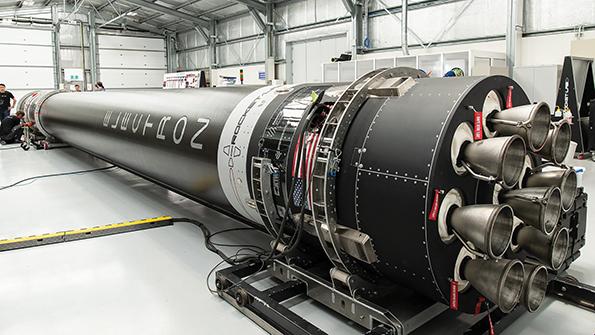
There is a new-old joke going around some aerospace circles: “You can’t spell ‘space’ without ‘SPAC.’” A SPAC is a special-purpose acquisition company, and, as almost everyone from commercial space enthusiasts to do-it-yourself day-traders of public stocks now knows, SPACs and space have more in common than just their spelling.
At least a half-dozen newly minted, publicly traded space companies are slated to emerge this quarter, as startups and rollups including Redwire, Rocket Lab, BlackSky Satellite, Spire Global and Momentus go through reverse mergers with their shell SPAC buyers (blank-check companies whose shares are already listed on stock exchanges). The latest, AST Space-mobile, started trading publicly April 7.
At least five more SPAC teams are known to be hunting for companies in the space business, directly or as part of an investor focus on aerospace, defense and government services. In the wider business world, about 25 new shell SPACs are being announced each week, according to Tess Hatch, a partner at Bessemer Venture Partners, an early funder of Rocket Lab and Spire. SPACs are sitting on roughly $80 billion in dry powder, she says.
“The expected increase in public space stocks has been a key story for the A&D sector in 2021,” Canaccord Genuity analyst Ken Herbert says. “And while the ultimate success of many of these companies is unclear, the space sector can’t be ignored by investors.”
Still, do SPACs herald a brave new world of hope for aerospace dreamers, or are there risks akin to the “dot-bomb” era of the early 2000s and the space flops of the 1990s? Cringeworthy as the answer might be, apparently the consensus so far is that this time is different.
“Bookending from where I started 15 years ago with Space Angels network—where we were just trying to get individual, accredited investors to write $25,000 checks to get these companies going—all the way out to accessing public markets [now], what gets me excited is that space entrepreneurs who are starting their ventures today have access to the full spectrum of finance vehicles that entrepreneurs in other industries have had for years,” says Guillermo Sohnlein, an advisor at aerospace-focused SPAC New Vista Acquisition.
Ironically, like commercial space companies, the SPAC phenomenon is not new; it is just undergoing an unprecedented wave of interest due to a confluence of macroeconomic and technological factors. That vortex brings together a surge of space startups—roughly 200 emerge a year, according to analyst Chris Quilty, inspired by a potential $1 trillion new industry—with an investment world that includes amateur individuals eager to deploy mountains of cash accumulated due to low interest rates, government stimulus and consumer technology business profits.
But key this time is that by accessing public markets much more quickly, space entrepreneurs will be able to obtain the funds they need to build out their business plans. That is important because space businesses remain resource-intensive ventures that need lots of capital for infrastructure just to operate.
“To be a fully funded space company is significant from that customer perspective—they know that you are funded; you have the capital that is going to be there for the capabilities they want and are counting on,” says BlackSky CEO Brian O’Toole.
“It’s incredibly capital-intensive when you have a mission of daily space delivery, which in our case involves rocket factories that entail production of hundreds of rockets,” says Astra CEO Chris Kemp. “We now have the capital to fully fund that business plan.”
SPACs serve aerospace well for other reasons, too. Unlike the traditional initial public offering (IPO) process, the SPAC process allows companies to provide future performance expectations. IPOs are better suited for established companies that can show past performance and are ready to issue earnings next quarter, such as Canada space stalwart MDA, which in March filed to go public the traditional way. With space SPACs, investors are looking toward earnings starting in 2024-26, says Voyager Space Holdings CEO Dylan Taylor, which expects to go public.
Of course there are risks. “Not all SPACs are created equal,” says AST Spacemobile Abel Avellan.
“The flip side is ensuring the companies are all high-quality,” says Rocket Lab CEO Peter Beck. “Using the SPAC as a last-ditch effort of a funding round is dangerous.”
How do you determine quality? Hatch of Bessemer says go to the basics: If it is a rocket or satellite company, ask how many have been launched and how many paying customers they have. “Those two things usually link back to the topline,” he says.

